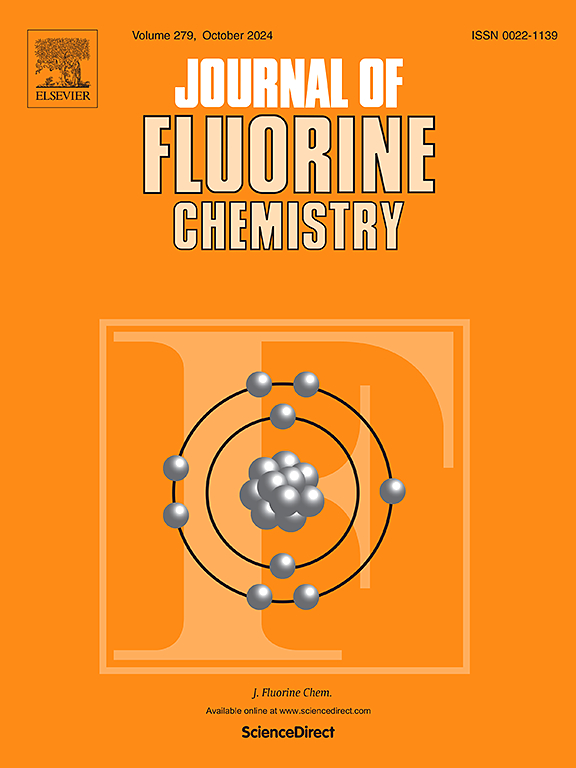对环丁烷氟化的高能洞察:单氟和二氟环丁烷
IF 1.7
4区 化学
Q3 CHEMISTRY, INORGANIC & NUCLEAR
引用次数: 0
摘要
环丁烷是包括药物在内的各种功能化合物中的关键环烷烃,在氟化后表现出显著的性质改变,如构象、极性和亲脂性的改变。本量子化学研究在G3MP2B3水平上进行,研究环丁烷的单氟化和二氟化的影响。它研究了在双星位、邻星位和1,3相对位置加入轴向氟和赤道氟的能量学。等径反应分析表明,环丁烷的氟化反应在热力学上总体有利。然而,引入轴向氟在能量上不太有利,使二轴反式-1,2-和顺式-1,3-环丁烷不稳定。在同分异构体中,1,1-二氟环丁烷通过类似异构体的相互作用(nF→σ*CF)实现了显著的稳定,而其他同分异构体由于刘易斯型相互作用而与电子离域相比经历了更大的不稳定。轴向和平伏的C−F键可以通过它们的1JCF耦合常数来区分。这些见解对于合理设计受氟原子立体化学排列和相对位置影响的氟化环丁烷衍生物具有重要价值。本文章由计算机程序翻译,如有差异,请以英文原文为准。

Energetic insights into the fluorination of Cyclobutane: Mono- and Difluorocyclobutanes
Cyclobutane, a key cycloalkane in various functional compounds, including pharmaceuticals, exhibits significant property modifications upon fluorination, such as altered conformation, polarity, and lipophilicity. This quantum-chemical study, performed at the G3MP2B3 level, investigates the effects of mono- and difluorination of cyclobutane. It examines the energetics of incorporating axial and equatorial fluorines at geminal, vicinal, and 1,3-relative positions. Isodesmic reaction analysis reveals that fluorination of cyclobutane is thermodynamically favorable overall. However, introducing axial fluorine is less energetically favorable, rendering diaxial trans-1,2- and cis-1,3-cyclobutanes unstable. Among the isomers, 1,1-difluorocyclobutane achieves notable stabilization via an anomeric-like interaction (nF → σ*CF), whereas other isomers experience greater destabilization due to Lewis-type interactions compared to electron delocalization. Axial and equatorial C − F bonds can be distinguished by their 1JCF coupling constants. These insights are valuable for the rational design of fluorinated cyclobutane derivatives with properties influenced by the stereochemical arrangement and relative positioning of fluorine atoms.
求助全文
通过发布文献求助,成功后即可免费获取论文全文。
去求助
来源期刊

Journal of Fluorine Chemistry
化学-无机化学与核化学
CiteScore
3.80
自引率
10.50%
发文量
99
审稿时长
33 days
期刊介绍:
The Journal of Fluorine Chemistry contains reviews, original papers and short communications. The journal covers all aspects of pure and applied research on the chemistry as well as on the applications of fluorine, and of compounds or materials where fluorine exercises significant effects. This can include all chemistry research areas (inorganic, organic, organometallic, macromolecular and physical chemistry) but also includes papers on biological/biochemical related aspects of Fluorine chemistry as well as medicinal, agrochemical and pharmacological research. The Journal of Fluorine Chemistry also publishes environmental and industrial papers dealing with aspects of Fluorine chemistry on energy and material sciences. Preparative and physico-chemical investigations as well as theoretical, structural and mechanistic aspects are covered. The Journal, however, does not accept work of purely routine nature.
For reviews and special issues on particular topics of fluorine chemistry or from selected symposia, please contact the Regional Editors for further details.
 求助内容:
求助内容: 应助结果提醒方式:
应助结果提醒方式:


